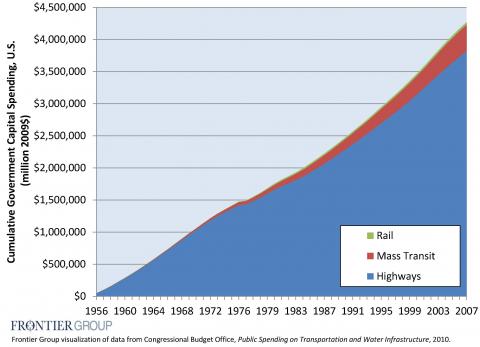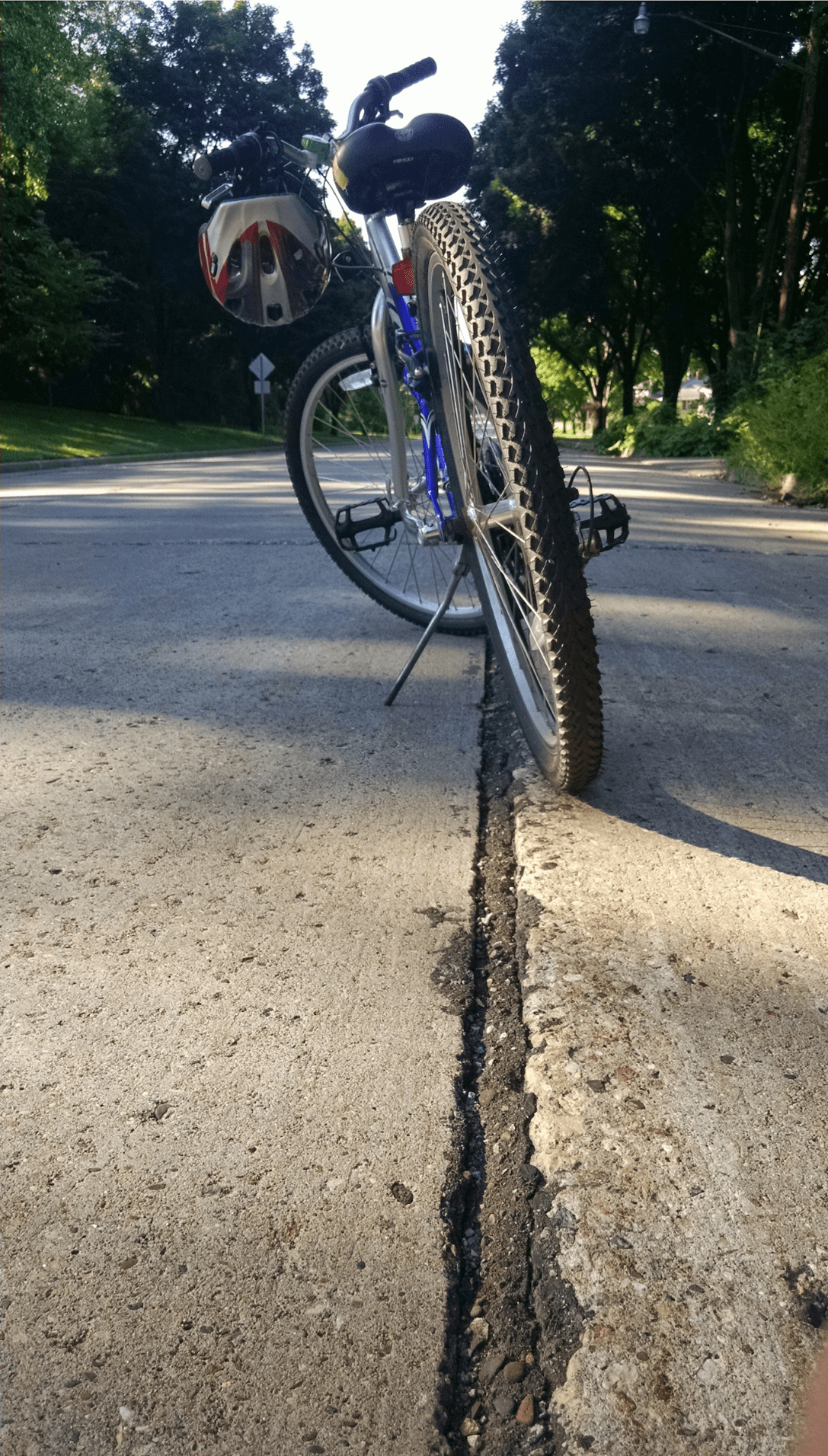2nd inbound orange line track to Boston isn't even cleared of snow between Oak Grove & Malden! #MBTApocalypse #MBTA pic.twitter.com/hQV9oEbtNq
— Cory Thomas (@coryt3) February 11, 2015
Cross posted from the Frontier Group.
As you may have heard, we’ve been experiencing a few public transportation problems here in Boston of late. Record-smashing snowfall, coupled with extreme cold temperatures and some questionable decisions by public officials in the early days of Snowmageddon have left the city with a subway and commuter rail system that is, as I write, barely functioning. It has also focused public attention on fiscal train wreck that is our local transit system, the MBTA.
One meme that has surfaced in the recent debate is that the MBTA should not spend a dime on further expansion until it can run the core part of its system reliably. It’s a compelling argument in many ways. Clearly, one should not invest in building a new addition to one’s home if the roof is caving in. It is also clear that ensuring the smooth functioning of the city’s core subway lines – some of which rely on cars that date from the late 1960s and infrastructure that dates from God knows when – is more critically important than adding new stations and service.
But the idea of putting further expansion and improvement plans on hold indefinitely is not a perfect solution either. Doing so essentially commits Boston to a 20th century (and in some places, a 19th century) transit system – albeit, perhaps, a well-functioning one – for years, if not decades, to come.
The tension between improving the functioning of our current, inadequate transit systems and building new, modern systems comes up over and over in debates among transportation experts and transit advocates.
Is it, for example, a smart idea to spend tens of billions of dollars on a modern high-speed rail system in California at the same time that Amtrak struggles (and often fails) to provide First World-quality service on the rest of its network? Should we consider major investments in new rail lines at a time when bus service in many communities is so substandard?
One reason we are forced into these unsatisfying debates, in my opinion, is because America failed to build functioning 20th century rail and transit systems during the actual 20th century. Below is one of my favorite charts – it’s derived from a 2010 Congressional Budget Office data set that estimated total infrastructure spending by all levels of government since 1956. Between 1956 and 1974, according to the CBO analysis, total government capital investment in the nation’s rail system was zilch - $0. Public capital investment in mass transit systems during that same period totaled $40 billion (2009$) – compared with $1.3 trillion in investments in highways.
Indeed, one could argue that, with liquidation of streetcar networks, passenger rail lines and associated infrastructure across the country in the postwar years, net investment in those services was actually negative. Cumulative Federal, State and Local Capital Spending on Highways, Transit and Rail, 1956-2007 (source: Congressional Budget Office)

Boston was a slight exception to these trends, largely due to the tenacious fight put up by local activists and advocates in the 1970s to stop the construction of urban freeway projects and transfer the funds to public transportation (as well as later work to wrest a commitment to MBTA reactivation/expansion projects as a concession for the large expansion of highway capacity represented by the Big Dig.)
Even then, however, as this animated map shows, it is not as though the MBTA has been growing by leaps and bounds in recent decades, and those expansion projects that have occurred have largely been successful. The extension of the Orange and Red Lines in the 1970s and 1980s has clearly been well rewarded in terms of ridership and transit-oriented development, while the new Silver Line bus rapid transit along the waterfront is already overwhelmed by demand.
The extension of commuter rail service to the southern suburbs in the 1990s – perhaps the most questionable investment in recent years – wasn’t really even an “expansion” project at all, but rather a restoration of previous service that was ended in 1959. Recent projects, including the ongoing extension of the Green Line to Somerville and the creation of infill stations along the Fairmount commuter rail line, have been all about improving transit connectivity and sparking development in already dense portions of the metropolitan area.
These are projects that are highly likely to succeed, and years overdue. Truly transformative and imaginative projects – such as the Urban Ring and North-South Rail Link – have continually been put on the back burner. (Indeed, proposals for circumferential transit service around Boston date back to 1923.PDF) My worry is that anti-expansion fervor will do the same to the MBTA’s plan to build out an “urban rail” network akin to Paris’ RER and Germany’s S-Bahn systems – a service that would make the MBTA far more functional, relieve the clogged core subway system, and open new parts of the region to much-needed residential and commercial development at relatively low cost in infrastructure investment.
Boston, like many cities across the United States, has emerging 21st century transit needs – needs that are not being served and cannot be fully served by our existing infrastructure, no matter how well it is run. As a rider who is dependent on one of the MBTA’s legacy subway lines, I obviously want to see sufficient investment to enable the core system to run well.
But as someone who cares about building a 21st century Boston that can accommodate strong population growth, provide homes for people of all socio-economic backgrounds, sustain a high quality of life, and meet the imperative to reduce the impact of our transportation system on the global climate, I also want to see that system to grow and improve.
As for where to get the money, that’s a difficult and complicated question. But given the extraordinary amount of resources we invested in our highway network over the last half century – and the fact that there always seems to be money in the banana stand for another highway boondoggle – perhaps we can now shift at least some of those resources toward building out the rail and transit networks we should have built 50 years ago, operating those and other services at a high level of quality, and planning for the needs of the next century.





